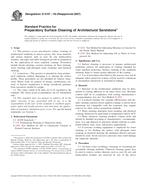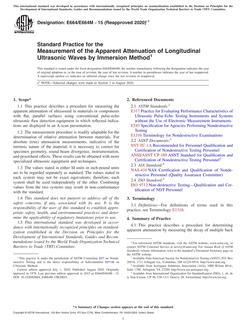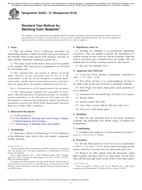1.1 These test methods apply to the chemical analysis of refined nickel and other forms of metallic nickel having chemical compositions within the following limits:
| Element | Weight % |
| Antimony, less than | 0.005 |
| Arsenic, less than | 0.005 |
| Bismuth, less than | 0.01 |
| Cadmium, less than | 0.0025 |
| Carbon, max | 0.03 |
| Cobalt, max | 1.00 |
| Copper, max | 1.00 |
| Hydrogen, max | 0.003 |
| Iron, max | 0.15 |
| Lead, less than | 0.01 |
| Manganese, less than | 0.20 |
| Nickel, min | 98.0 |
| Nitrogen, less than | 0.50 |
| Oxygen, less than | 0.03 |
| Phosphorus, less than | 0.005 |
| Selenium, less than | 0.0010 |
| Silicon, less than | 0.005 |
| Silver, less than | 0.01 |
| Sulfur, max | 0.01 |
| Tellurium, less than | 0.0010 |
| Thallium, less than | 0.0010 |
| Tin, less than | 0.005 |
| Zinc, less than | 0.015 |
1.2 These test methods may be used to determine the following elements by the methods indicated below:
| Antimony, Arsenic, Bismuth, Cadmium, Lead, Selenium, Silver, Tellurium, Tin, and Thallium by the Electrothermal Atomic Absorption Method |
| Bismuth, Cadmium, Cobalt, Copper, Iron, Lead, Manganese, Silver, and Zinc by the Flame Atomic Absorption Method |
| Carbon, Total, by the Combustion-Instrumental Method |
| Nickel by the Dimethylglyoxime Gravimetric Method |
| Nitrogen by the Inert Gas Fusion Thermal Conductivity Method |
| Oxygen by the Inert Gas Fusion Method |
| Sulfur by the Infrared Absorption Method |
| Sulfur by the Methylene Blue Spectrophotometric Method After Generation of Hydrogen Sulfide |
1.3 The values stated in SI units are to be regarded as standard. No other units of measurement are included in this standard.
1.4 This standard does not purport to address all of the safety concerns, if any, associated with its use. It is the responsibility of the user of this standard to establish appropriate safety and health practices and determine the applicability of regulatory limitations prior to use. For specific precautions, see Section 6.
Product Details
- Published:
- 05/15/2005
- Number of Pages:
- 12
- File Size:
- 1 file , 170 KB
- Redline File Size:
- 2 files , 380 KB


